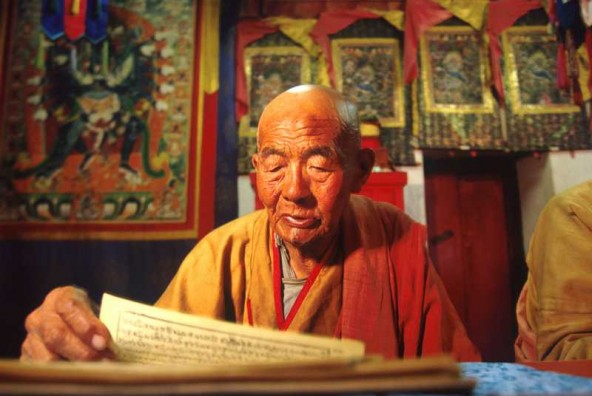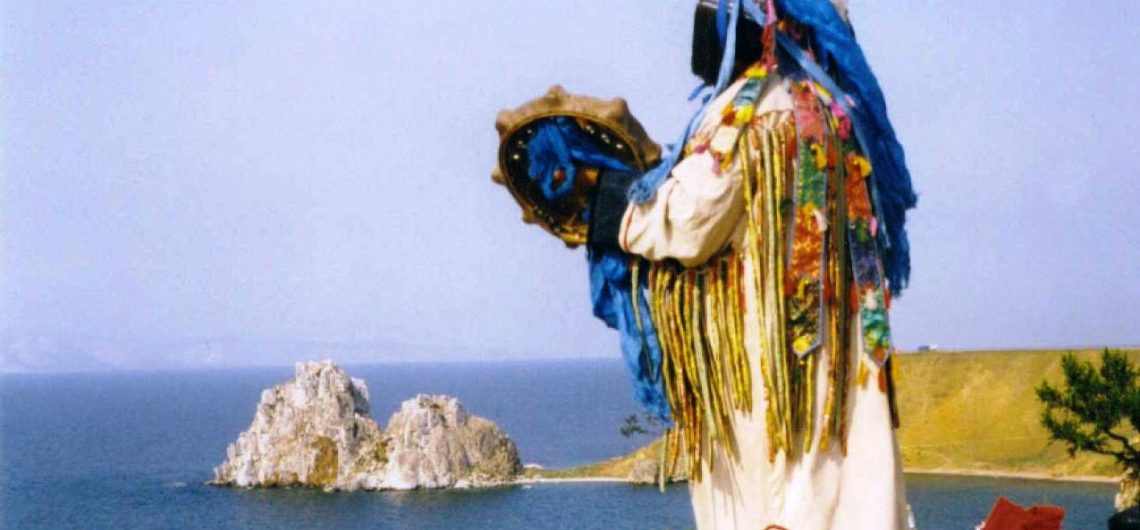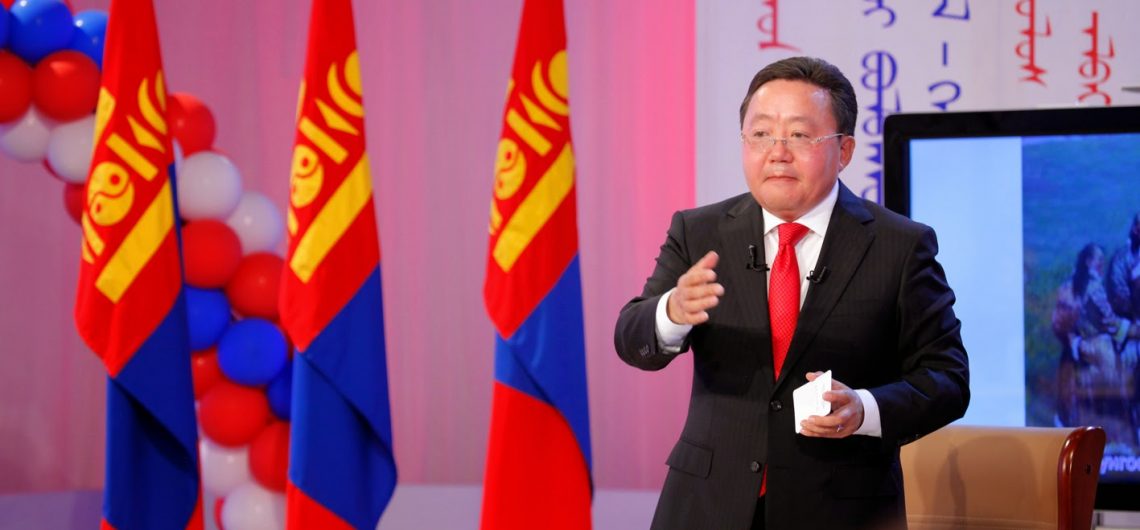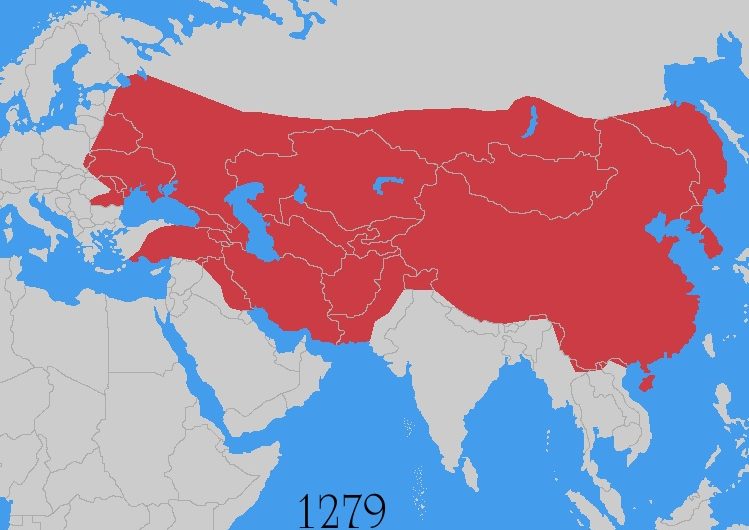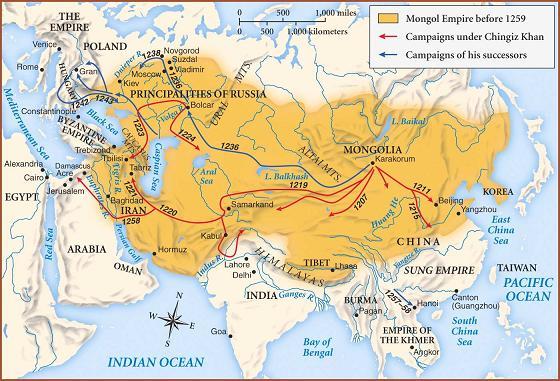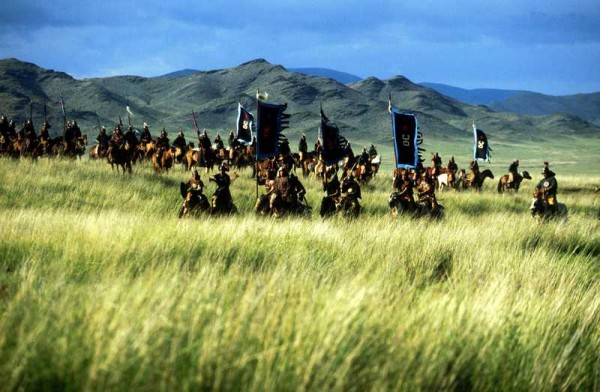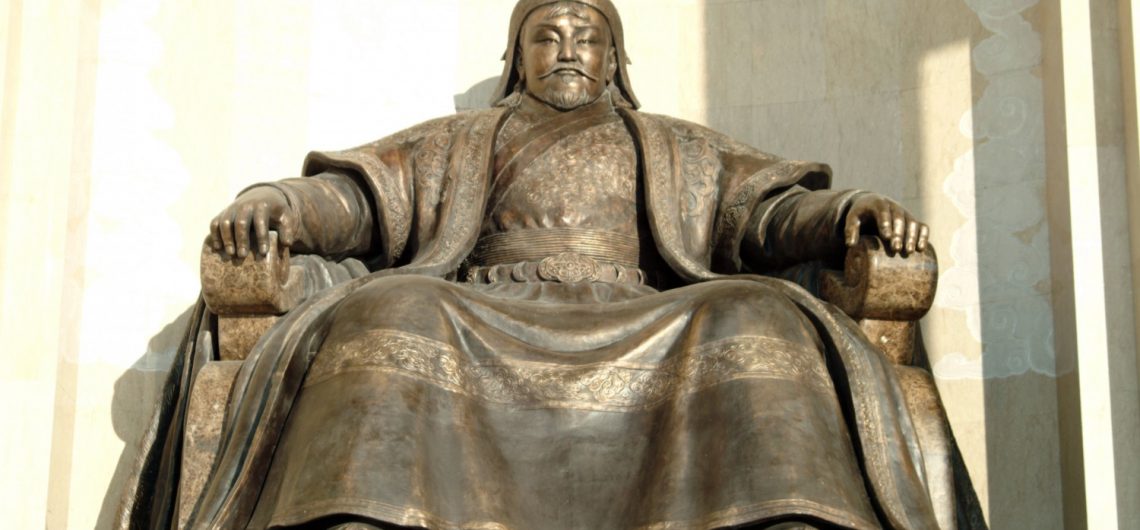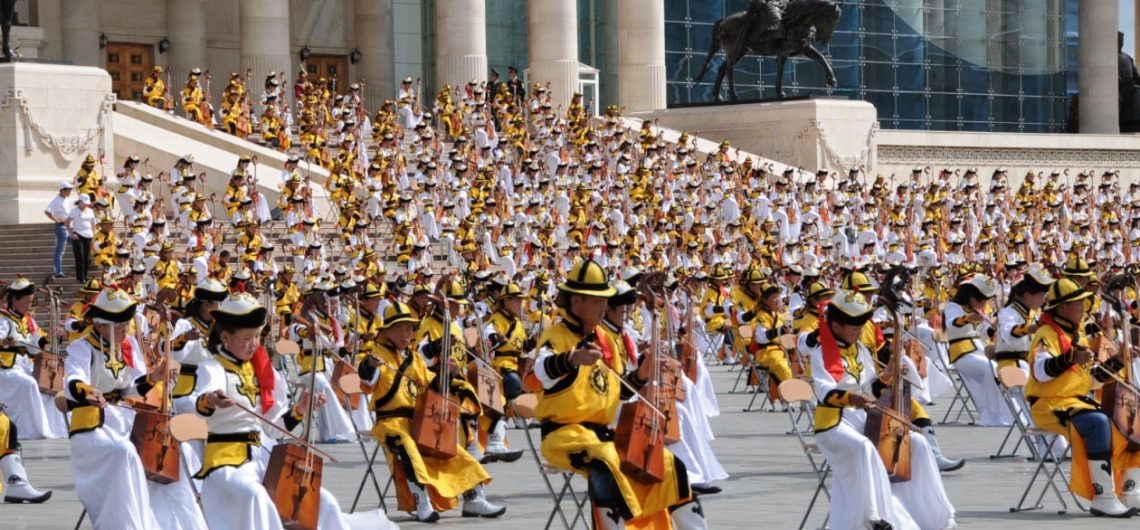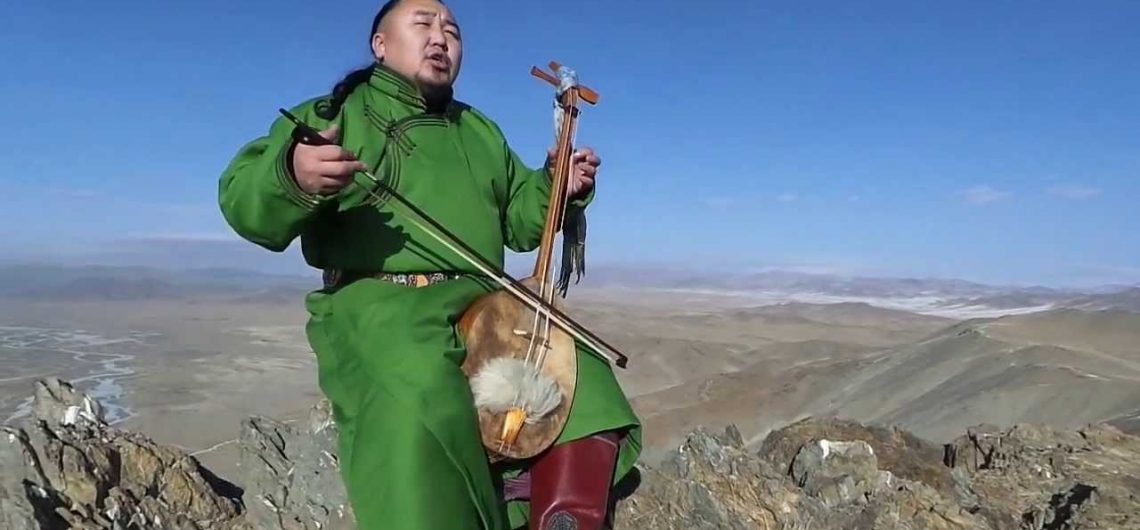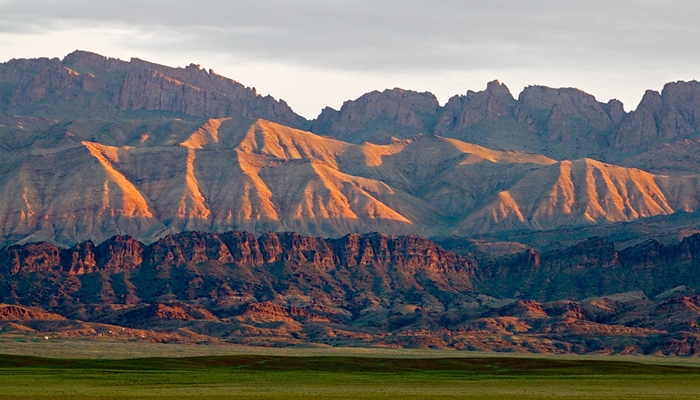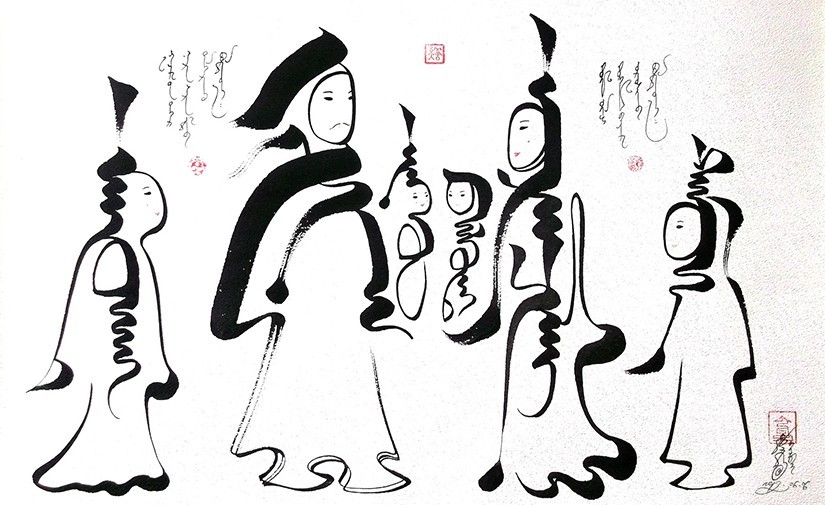

The first Buddhist temples of Mongolia were built during the period of the Huns that began in the 3rd century BC. From year 330 to year 550, during the period of the Nirun, Buddhism was the state religion and more than ten kings received honorary Buddhist titles.
Shamanism originates from the prehistoric times and probably evolved from the traditions based on the cult of nature. Some Mongolian ethnic groups – Darkhads, Buryats, Khotogoids, Uriankhai, Dukhans – still practise shamanism.
The shaman represents a clan or a tribe in the communication with the spirits of deceased persons and nature. He knows how to communicate with “the other world”: he must execute an expressive dance on the sound of drums and, sometimes helped by alcohol or smoked herb, then he goes into a trance. When he emerges from the trance, he passes the message of the spirits on to his community. Not only the shaman is a religious figure, but also a healer and a patron for arts, customs and the tribe. He’s the intermediary between earth and symbol world.
The shaman is not determined by a choice, whether it be individual or collective. It’s determined by a process called “spirit touch”, which could be understood like an indication coming from a former shaman. The candidate comes to fame by going into a trance. The trance state is generally accompanied with illness that can last some days or some years and that only another shaman can explain. If someone who suffered the shamans’ illness or knew the spirit touch doesn’t become a shaman, the belief is that this person will die.
In the early 20th century, the Manchu state quickly declined and the revolutionary ideas developed. In 1911, the Republic of China replaced the state of Manchuria.
The intellectuals and statesmen of outer Mongolia proclaimed independence of the country. The new state of outer Mongolia was a theocracy, so the religous leader, called Bogd, was also the political leader. In 1913, a delegation of representatives of outer Mongolia, led by T. Namnansuren, visited the Russian Empire in order to find a support to secure independence. They wanted outer Mongolia to be internationally recognised, but they failed.
In 1915, in Kyakhta, discussions began between outer Mongolia and the Republic of China. Moscow and Beijing refuted to recognise the independence of outer Mongolia, and granted only an autonomous status.
In 1919, the Republican government of China abolished the autonomy and sent troops to outer Mongolia. The aim was to secure the Chinese interests in Mongolia, in the cas where Russians, muddled since 1917, wanted to extend there. The Mongolian independentist leaders resisted in many areas of the country.
In 1921, after revolutionary changes, Mongolia found its independence back and formed a theocratic state. This time, the government restricted the powers of the 8th Bogd. When the Bogd died in 1924, the revolutionary leaders transformed Mongolia in a republic and adoped the first constitution. The leaders of the state, helped by Soviet councillors, chose a communist direction for Mongolia.
The republican form brought several reforms. The society could not have classes, so the nobility gave up its titles and privileges. The occidental medicine, the technology and education appeared in Mongolia and marked the end of old practices.
The 1930’s were crual. As in any communist state at that period, political purges seriously affected the society. The system was responsible of the death of thousands of innocent persons wrongly accused.
In 1939, Mongolia entered a major conflict against Japan along the eastern border of Mongolia (incident of Khakhingol). The fights between Japanese and Mongolian patrols that started in 1936 degenerated into in a majorborder confrontation. The Soviet army helped Mongolians, and together, they beat the Japanese forces and made the border secure.
In 1945, the Chinese government recognised independence of Mongolia. Mongolia became an ex officio member of the international community, and joined the United Nations in 1961.
Until the end of the 1980’s, Mongolia was a communist state flawlessly aligned on the Soviet Union. But the world was changing, and also was the case for Mongolia. In December 1989, the democrat opposition asked political reforms and organised important protests. In 1992, Mongolia adopted a new constitution that guarantees an open democracy and economic changes.
Genghis Khan started a determining war against Jurchen Dynasty of North China. His son Juchi conquered most part of Siberian territories, which secured the Northern borders of the country. The success of this war marked a turning point for Mongolians. Moreover, Genghis Khan settled a huge military campaign on the Eastern flank Mongolians defeated the Kara-Kidans, then get closer to Khwarezm, the present Uzbekistan and Afghanistan. The war against Khwazerm began in 1218. The Mongolian army crossed the Transoxiana that dominated the large Khwarezmian cities Urgench, Samarkand, Gherat, Merv, Bukhara, and many cities fell under the power of Genghis.
In 1221, Jebe and Subedey, two talented generals went towards West and lined the Caspian Sea. They get closer to Georgia and Armenia. Mongolians conquered these two Caucasian kingdoms and later crossed the Caucasian mountains to go on the Russian princes lands. In 1223, Jebe and Subedey encountered the Russians on the Kalka River and defeated them. So they decied to come back home, by the Volga, Bulgaria, and Ural.
Genghis Khan died in 1227. He left as a legacy a huge empire stretching from Caucasia to Korean peninsula, from China to Siberia. His son Ogodei took the title of Emperor in 1229. He carried on the war against Jurchens and little by little defeated them. In 1235, Mongolia took the last Jurchen fortress.
The Mongol Empire had a strict hierarchical structure. The Khan had the main powers. The supervisory board was the Great Assembly Khuralday, composed of generals and of aristocracy members. Genghis’ half brother Shihihutug was in charge of legal system. Genghis’ youngest dealt with the good working of the Great Law called Yasa.
In 1235, the Khuralday approved that Batu, Genghis Khan’s grandson, led the Western campaign with general Subedey. The army walked hundreds of miles and took Russia. From 1237 to 1240, the Mongolian militaries took many Russian big cities, such as Kiev, Vladimir, Ryazan,etc.
So Batu entered Europe attacking Hungary and Poland. In 1241, Mongols defeated Europeans in Liegnitz. In 1242, while Batu left to ruin Hungary, Moravia and Bohemia and reached the Adriatic Sea, an important message was sent to him: Ogodei was dead and the princes of Genghis Khan Dynasty had to come back to Mongolia. Batu left Europe, set up in the region of Volga, and founded the Golden Horde.
The results of this campaign led Mongolia on the international scene. European emissaries came until the Mongolian capital, Kharkhorin, in order to develop diplomatic relationship with the Khan.
The following Khan ruled only two years. Then Mönkh ruled on Mongol Empire. He was a perceptive politician who kept good relationship with Catholic Roman Pope and European kings. Mönkh started the Centre-West campaign. The army went until Iran and Syria. In 1258, Mongolians took Baghdad and set up a new territory.
The following Khan, Kubilai, led the Empire from 1260. During his reign, he conquered China and annexed Korea. He had the longest reign of Mongol Empire. Vietnam and Burma recognised domain of Mongolia. But Kubilai wanted to conquer Japan, and this was a failure : two fleets failed. In 1279, Kubilai transfered the capital from Kharkhorin to Beijing and founded Yuan Dynasty.
Around 1298, the Mongol Empire covered most part of the Eurasian continent. The empire united four territories: the Mongolian territory (Mongolia, China), the Golden Horde (Russia, Ural), Chagatay’s territory (Central Asia), and the Ilkhan Kingdom (Iran and Centre-West).
After Kubilai, the khans were not good leaders. They were not able to administrate such a large empire. Mongolians were a small minority on the territories conquered. One after another, revolts broke and provinces seceded. In 1312, the Golden Horde get separated from the centre. People took control of Chagatay’s territory in the 1340’s. Little by little, in Iran, Mongolians disappeared from the population.
The central government of the empire was also showing signs of decline. The Khan Tooon-Tömör and the other Mongolians left China in 1368 when Chinese mutinies started to extend. That was the end of the Mongol Empire.
First men appeared in Mongolia 500.000 years ago. This is a chronology retracing the main events occurred in Mongolia throughout its history.
Prehistoric period
500.000 BC: humans appear in Mongolia
4000 BC – 2000 BC: Bronze Age
2000 BC: breeding develops in Mongolia
700 BC – 500 BC: transition towards the beginning of Iron Age
400 BC: Chinese people starts to build the Great Wall to protect themselves from any incursion of the Xiongnus, main enemies of China
Xiongnus and Mongolian empires
209 BC: Modun Shanyui establishes the first Mongolian empire: Xiongnu Empire
1 – 100: Xiongnus are driven out of China
156: Xianbeis defeat the Xiongnus. Xianbei Empire becomes the most important empire of Central Asia.
317: Xianbeis conquer North China
360: end of the Xianbei Empire
386 – 533: period of the Wei Dynasty, established by the Tuoba in North China
745 – 840: period of the Uyghurs’ reign. They had defeated the Kokturks in 744.
840: Kyrgyz seize control on Uyghurs
916: beginning of the reign of Kitans, established beyond East Mongolia, Manchuria and North China
1122: Chinese defeat Kitan
The Great Mongol Empire
1162: Temujin’s birth
1189: Temujin becomes the famous Emperor Genghis Khan
1189 – 1205: Genghis Khan unifies the Mongolian nomadic tribes
1206: Genghis Khan proclaims himself leader of the Mongol Empire and begins to found his empire
1211: Genghis Khan attacks China
1215: Beijing is defeated and becomes Mongolian
1227: Genghis Khan’s death
1229: Genghis Khan’s third son, Ogodei Khan, is proclaimed second Khan
1231: Invasion of Korea
1235: Kharkhorin becomes the capital of the Mongol Empire. Marco Polo arrives in Kharkhorin right at that time.
1236 – 1240: period of offensives against Russia by Genghis Khan’s grandson, Bat Khan, and his Golden Horde
1241: Ogodei Khan’s death
1241 – 1242: Mongols invade Poland and Hungary
1246: Guyuk, Ogodei’s son, is proclaimed Khan and subdues Tibet. He dies this year.
1247: Mongolia has its first census
1251: Ogodei’s nephew, Mongke, is proclaimed Khan
1251: Mongols defeat Iran
1254: William of Rubruck arrives in Kharkhorin, Franciscan monk sent by the King Louis IX of France
1256: Mongols take Bagdad
1259: Mongke’s death
1260: Egyptian Mameluks defeat Mongols
1261: Genghis Khan’s grandson, Khubilai Khan, is proclaimed Grand Khan
1264: the capital is moved to Beijing
1271: Khubilai Khan changes the name of his empire into “Yuan”
1274 and 1281: Mongols try to invade Japan, without success
1275: Marco Polo reaches China
1276: Mongols annex Hangzhou, capital of the Song’s China
1279: Khubilai Khan achieves the conquest of the Chinese territory unifying China in his own empire. He founds the Yuan Dynasty overthrowing the Song Dynasty of South
1294: Khubilai Khan’s death
1299: Mongols invade Syria
1333: Togoontomor, last Khan of the Mongol Empire, seizes control on the Yuan Empire
1368: Mongols lose the Chinese territory. The Yuan Dynasty collapses and is replaced by the Ming Dynasty
Fall of the Empire, domination of Manchus
1388: Chinese destroy Kharkhorin
1400 – 1454: civil war in Mongolia
1409 – 1449: Mongolia attacks China
1466: Dayan Khan unifies most Mongolian tribes
1480 – 1502: end of the control of Mongols on Russia. The Golden Horde falls.
1571: Mongols put an end to a 300-year war against Chinese
1578: Mongols convert to Tibetan Buddhism under Altan Khan’s reign. He gives the title of Dalai Lama to Sonam Gyatso.
1586: Buddhism becomes the official religion of Mongolia
1589: the construction of the first monastery of Mongolia begins: Erdene Zuu Monastery.
1641: Zanabazar is proclaimed leader of Buddhism in Mongolia
1641 – 1652: Russians defeat Buryats and win back the control of the area of Lake Baikal
1672: Mongolia invades Siberia and Russia
1691: Most Khalks Mongolians accept the Manchu sovereignty and are included in the Chinese Empire (Qing Dynasty, 1644-1911)
1728: the Sino-Russian treaty of Khyakhta redefines the Mongolian borders
1732: end of the independence of Mongolia with the defeat of the Dzungars
1750: China divides Mongolia into two parts: North becomes Outer Mongolia and South becomes Inner Mongolia
1783: Russians defeat the last reigning descendent of Genghis Khan
Independence, socialism and democracy
1 December 1911: Outer Mongolia becomes independent from China
28 December 1911: Mongolia puts in place an autonomous theocratic government
5 November 1912: a Sino-Russian treaty recognises China’s sovereignty on Mongolia
25 May 1915: Russia, China and Mongolia sign the treaty of Khyakhta that guarantees the independence of Mongolia
September 1918: Chinese troops occupy Outer Mongolia
March to June 1920: first steps towards the creation of the Mongolian People’s Party that forges links with the international communist movement
October 1920: White Russians invade Mongolia
13 March 1921: creation of the Mongolian People’s Party
July 1921: the Russian and Mongolian armies drive the White Russians out of Mongolia
11 July 1921: creation of the Provisional Popular Government of Mongolia
14 September 1921: Sukhbaatar, hero of the Revolution, announces the independence of Mongolia
5 November 1921: Soviets recognise the Provisional Popular Government
22 February 1923: Sukhbaatar’s death
31 May 1924: A Sino-Russian treaty recognises China’s sovereignty on Mongolia
August 1924: the Mongolian People’s Party becomes the Mongolian People’s Revolutionary Party
25 November 1924: communists announce the Mongolian People’s Republic. The capital is named Ulaanbaatar (Ulan Bator in English), “red hero” referring to Sukhbaatar
December 1928: Khorloogiin Choibalsan becomes the political leader
1929 – 1932: confiscation of the feudal goods and abolition of the religious communities
27 November 1934: an agreement between Mongolia and Russia authorises the entry of Soviet troops in Mongolia
1937 – 1939: religious purges
1938: closure and destruction of Buddhist monasteries
1939: Khorloogiin Choibalsan becomes an uncontested leader
1939: the Russian and Mongolian troops defeat Japanese in East Mongolia
March – April 1940: Yumjaagiin Tsedenbal becomes secretary-general of the party
10 August 1945: Mongolia declares war on Japan
5 January 1946: China recognises the independence of Mongolia
27 February 1946: signature of the Treaty of Friendship and Mutual Assistance about economic and cultural cooperation between Mongolia and Soviet Union
26 January 1952: Choibalsan’s death
May 1952: Tsedenbal becomes Prime Minister
December 1952: signature of an agreement about economic and cultural cooperation with China
6 July 1960: new constitution
27 October 1961: Mongolia joins the United Nations
1962: condemnation of the “cult of personality” against Choibalsan
7 June 1962: Mongolia joins the Council for Mutual Economic Assistance
23 August 1984: Batmonkh becomes secretary-general of the party
12 December 1984: Dumaagiin Sodnom is elected Prime Minister
April 1986: signature of long-term commercial agreement with China
27 January 1987: first diplomatic relations with United States
7 March 1989: Soviets announce the withdrawal of the troops
1992: a new constitution is written and communists win another election
1996: against all odds, the democratic coalition defeats the communists in the legislative elections
2000: turnaround: the communists defeat the democrats in the following elections
In Mongolia, the most popular instrument is indubitably the morin khuur, whose name means, “fiddle with a horse’s head”. It is a square vielle or violin with a long, straight neck, curved at the tip and topped with a sculpted horse’s head. It’s supposed to represent the movement and sounds of a horse.
Every Mongolian family strives to have a morin khuur at home, even though this instrument is hand-made and fairly quite expensive.
In the past, it was simply a ladle for airag on which strings were strung. At that time, the instrument was called “shanagan khuur” (shanaga is a kind of ladle). Later, the body took the shape of a trapeze and the sculptors who made this instrument popular began to decorate it with whimsical figures. That’s why the horse’s head, an animal greatly loved in Mongolia, appeared on the top of the neck. The name was changed to morin khuur. Twelve animals are sculpted on the neck according to the twelve years cycle of the lunar calendar.
The morin khuur has two strings and a bow made from the hair of a horse’s tail. At the top of the morin khuur’s neck, there is a horse’s head, but also four other animals: camel, cow, sheep and goat, because they symbolize wealth and plenty in Mongolia. The morin khuur is the most suitable instrument to accompany the traditional long and short songs and the Mongolian classical dance called biyelgee.
A few years ago, the President of Mongolia declared: “the morin khuur is our national instrument” and the government founded the “Orchestra of the fiddle with a horse’s head”. During the 13th century, this kind of orchestras was very renowned in Mongolia. Today, Mongolians usually use the morin khuur for Naadam, Tsagaan Sar celebrations, great weddings and other important celebrations.
The “khoomei” or throat singing is an ancestral overtone singing that consists in reproducing natural sounds like the flow of water, the breath of wind, the echo of the mountains, the rumble of thunder, the singing of birds, etc. An overtone singing is characterised by a vocal technique that allows to make simultaneously several sounds with a single vocal organ, combining different voices and different ways to place the tongue or the lips.
The singer uses his/her throat to give out a continuous deep sound, and, at the same time, using his/her tongue to control the breathed out air, he/she manages to modulate the resonance in more high-pitched harmonics. This singing can be related to the mouth harp, this small instrument that also produces several different sounds: drone, singing, and counterpoint.
A khoomei singer must know the different organs very well to use them with precision: pharynx, vocal cords, oral cavity, tongue, lips, and nasal cavity. Good khoomei singers can modify their own frequency by adapting the volume of the oral cavity, the opening of the mouth, and the position of the lips.
Overtone singings have been sung for a long time in many cultures across the world, especially in Asia, by Mongolians, Tuvas, Bachkirs, Altai people, and Tibetan people, but also in Italy by Sardinian people, in India by Rajasthan people, or in South Africa by Xhosa people.
Some have noticed that a third sound could be produced with Tuvan techniques, but it’s still impossible to know if this third sound can be controlled. This third sound seems more to look like the mouth harp’s counterpoint.
So, khoomei is nothing but an overtone singing. But it’s divided into six categories: khamrin khoomii (nasal khoomei), bagalzuuriin khoomii (glottal khoomei), tseejnii khondiin khoomii (chest cavity khoomei), uruulin khoomii (labial khoomei), khosmoljin or turlegt khoomii (khoomei combined with long song), tagnain khoomi (palatal khoomei). The difference lies in the technique used.
Khoomei is said to come from the area of Khovd, in the Altai range, western Mongolia. The four most famous khoomei singers of Mongolia are Suindui Jajaa, Tserendorj, Ganbold, and Odsuren, and they all come from Khovd. Besides Ganbold worked as sound operator on the original soundtrack of the famous movie “Queen Mandukhai the wise”. But khoomei also extended to other areas sometimes really far from Khovd.
Khoomei, and more generally all types of overtone singing, is also supposed to have therapeutic virtues. Experiments led by doctors and musicians have often shown that there was a connection between mental or physical health and music. When it’s used for therapeutic purposes, khoomei’s main goal is to bring back concentration and sanity. Some shamanic experiences and Tibetan singings are very close to this goal too.
For example, this type of singing is said to have real effects on stammer, blocks in the throat, confidence in one’s voice, inhibition, respiratory problems, anxiety, tiredness, childbirth pain, etc. but no study confirms the efficacy of the practice.
And moreover, these effects are said to affects, not only humans, but also animals!
Mongolia is located in the Northern hemisphere temperate zone. Located at an average altitude of 1500 metres above sea level, separated from the oceans and surrounded by high mountains that block wet winds, Mongolia has an extreme continental climate. Winter is long, with cold temperatures, but summer is hot and short.
Mongolia enjoys more than 260 sunny days per year, which means it’s one of the sunniest countries in the world. In winter, the sky keeps its intense blue colour but combines with biting cold.
Winter
From November to March, it’s winter and temperatures regularly fall under 30°C (86°F). It’s a dry cold, and, with a good equipment, it’s possible to visit Mongolia in that period.
Spring
April and May are transitional months. It’s spring. The climate is certainly getting warmer but it’s the sandstorms period: being caught by a storm in Gobi desert can be an unforgettable experience. May is reputed to be the most unsettled month; the four seasons can pass in a single day… From which the Mongolian motto: « beware of the morning sun ».
The reward for the traveller is that spring is the period when the livestock gives birth, which entails a great activity in the countryside (shearing-time).
Summer and autumn
Then come the four most pleasant months for a trip to Mongolia: June, July, August, September.
From June, temperatures are higher than 20°C (68°F) and it’s pleasant to visit Mongolia. June and July are the most humid months and showers in the end of the afternoons are frequent, notably in Khovsgol.
June and September are the most favourable months to visit Gobi.
In July, the steppe takes her nice green colour and keeps it for about two months.
From the 15th of August, night temperatures significantly drop with frost risk, but the days remain pleasant with temperatures varying between 15°C and 25°C (59-77°F), and this lasts until mid-September.
In this period, there’s also a risk of snow at high altitude (Naiman Nuur Park for example).
The Mongolian language belongs to Ural-Altaic languages with Turkish, Khazakh, Uzbek, Finnish and Korean languages.
It’s an agglutinative language, which means that words are formed adding suffixes to a basis. Mongolian words are either masculine or feminine, according to the vowels they have: А, У et О are masculine vowels, while Э, Ү et Ө are feminine. Words can’t have at the same time masculine and feminine vowels.
The evolution of the Mongolian language can be understood studying the Mongolian traditional writing (Uyghur), because it kept the orthography of the Mongolian language used many centuries ago. Beforehand, vowels and consons were alternated, but in the modern Mongolian language, some syllables have been removed, so that this rule does not exist anymore and long vowels have been created. For example, the word “khan” comes from the former word “khagan”.
The Mongolian traditional script dates from the 9th or 10th century. It’s based on Uyghur alphabet. It’s only from the 12th century that the latter became the official script. The oldest example of the Mongolian script is the “Genghis stone”, a monument that Genghis Khan made build in 1224 in the honour of Prince of Yesunge, who had hit a target from a distance of 335 ald (536 metres, 1758 feet) during a warriors’ competition.
After the Mongolian-Uyghur script, other scripts were created and used in Mongolia.
The first of them was the horizontal square script. Kubilai Khan asked Pagma Lama to create a new script in order to increase alphabetisation in the Yuan Empire. The script he created was called “the new writing”. Books were given to schools and at the end of the 1260’s, the revenues of the taxes were given to those who were studying this script. A decreet obliged the official orders from monasteries (1270) and from government (1273) to use this alphabet. But despite its ambitious aims, it could not manage to replace the other scripts used in the empire.
In 1648, Zaya Bandida created a new alphabet called tod or “clear writing” to propose a variant to Uyghur script. He aimed to solve one of the problems of the Mongolian writing: a single letter could have several possible pronunciations. His aim was to connect the spoken language and the written language that had become very dissimilar after several centuries of stagnation of the written language. The new writing was called “clear” because, unlike Uyghur script, it made a clear differentiation between the seven vowels and between the consons that beforehand were written with the same letter. Many documents have been writing with this script, but it never spread out.
An important script used for the translation of religious sutras was the “soyombo” alphabet, created by Ondor Gegen Zanabazar. It had 90 letters corresponding to Khalkh pronunciation. With this alphabet, it was possible to transcribe Sanskrit, Tibetan, and Mongolian.
The Manchu script is another variation of the Mongolian script. Norkhatsi Erdene and his assistant Gagai created this alphabet in 1599.
Until 1940, almost all Mongolians used the former script (Uyghur), but in 1946, the Cyrillic alphabet became official in Popular Republic of Mongolia. Beforehand, in the 1930’s, it had been decided to use the Latin alphabet and some books and newspapers had been printed with Latin letters. But this project had finally been given up.
In 1990, the government tried to set again the former script as official script, without success.
Nowadays, the classic script is still used in Inner Mongolia.
